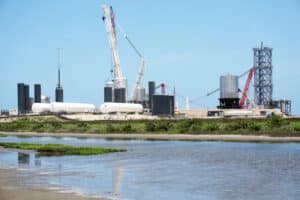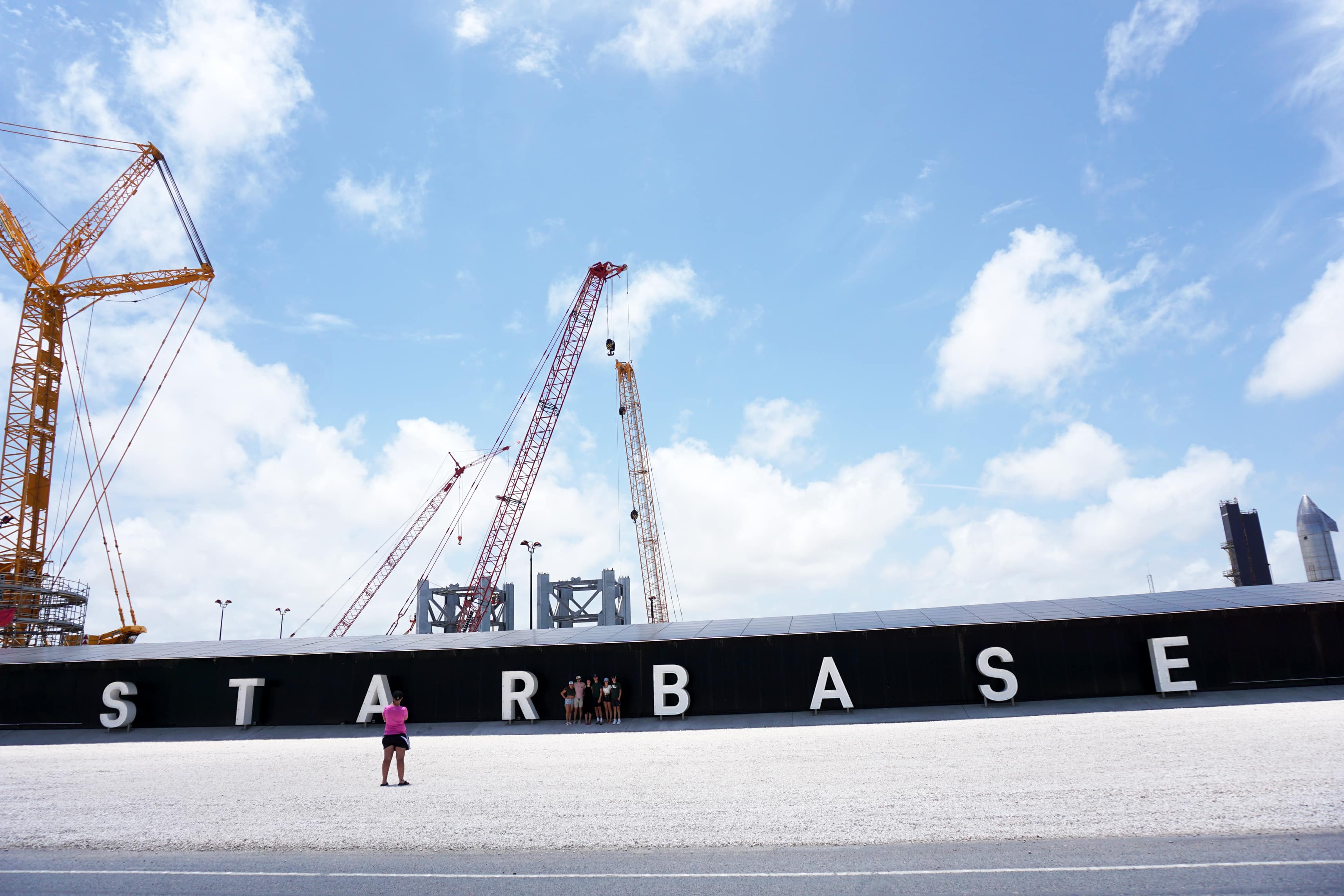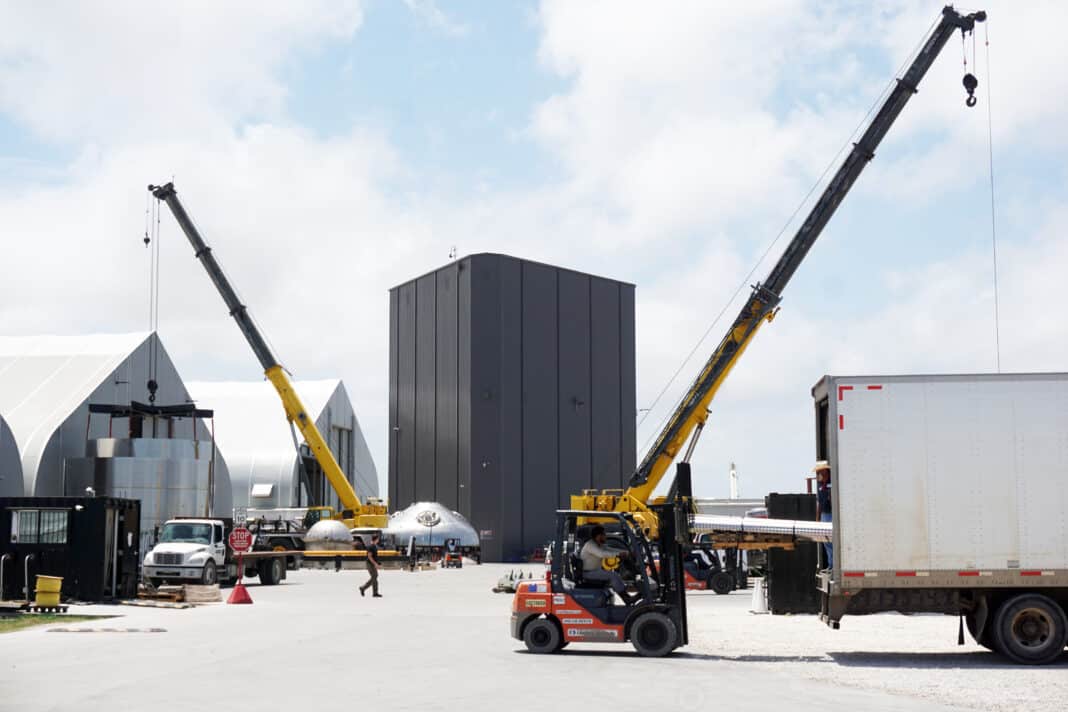
BROWNSVILLE — SpaceX’s first orbital flight of a Starship prototype will launch from the company’s production/test site at Boca Chica and wind up in the water — on purpose.
According to a document SpaceX filed with the Federal Communications Commission last month, the massive Super Heavy booster stage used to push the Starship spacecraft into orbit will separate approximately two minutes and 10 seconds into the flight and land in the Gulf of Mexico about 20 miles offshore from Boca Chica.
The orbital Starship will continue flying between the Florida straits and, once in orbit, will execute a powered, targeted, soft ocean landing roughly 62 miles off the northwest coast of Kauai, Hawaii, according to the FCC filing. From launch to splashdown off the Hawaiian coast will take about 90 minutes, said SpaceX, which provided no launch date.
The objective of the flight will be to collect as much data as possible during the flight about “entry dynamics” and what the test vehicle undergoes “in a flight regime that is extremely difficult to predict or replicate computationally,” according to the filing. The collected data will guide any changes in how subsequent Starship prototypes are designed and/or operate, and allow SpaceX to create more accurate models for computer simulation, according to the document.

Meanwhile, the company is preparing for offshore launches and landings using converted offshore oil-drilling platforms. SpaceX well over a year ago began advertising for offshore operations engineers to “work as part of a team of engineers and technicians to design and build an operational offshore rocket launch facility.”
SpaceX founder and CEO Elon Musk tweeted last July that “SpaceX is building floating, superheavy-class spaceports for Mars, moon & hypersonic travel around Earth.” He also commented that the launch and landing of Starship/Super Heavy (collectively “Starship”) “are not subtle” and that to protect heavily populated areas from extreme noise levels the offshore launches would have to take place many miles from the coast.
Ocean spaceport Deimos is under construction for launch next year https://t.co/WJQka399c7
— Elon Musk (@elonmusk) May 30, 2021
In August 2020 a SpaceX subsidiary, Lone Star Mineral Development LLC, purchased two disused offshore oil rigs, which SpaceX has renamed Deimos and Phobos after the twin moons of Mars. The company is developing Starship to carry passengers to Earth destinations and the moon, but also to Mars for the purpose of establishing a settlement and making humans a multiplanetary species.
“Ocean spaceport Deimos is under construction for launch next year,” Musk tweeted on May 30 of this year.
Work on Deimos is taking place at the Keppel AmFELS shipyard at the Port of Brownsville, while Phobos is being converted into a launch/landing platform by an offshore engineering firm in Pascagoula, Miss., according to the Biloxi newspaper Sun Herald, which reported that the company is “well along” on a six-month project to remove drilling equipment from the semi-submersible rig.
SpaceX conducted its first completely successful suborbital Starship prototype flight from Boca Chica on May 15, when the SN15 flew to approximately 33,000 feet and landed in one piece without incident after a flight lasting six minutes and eight seconds.




